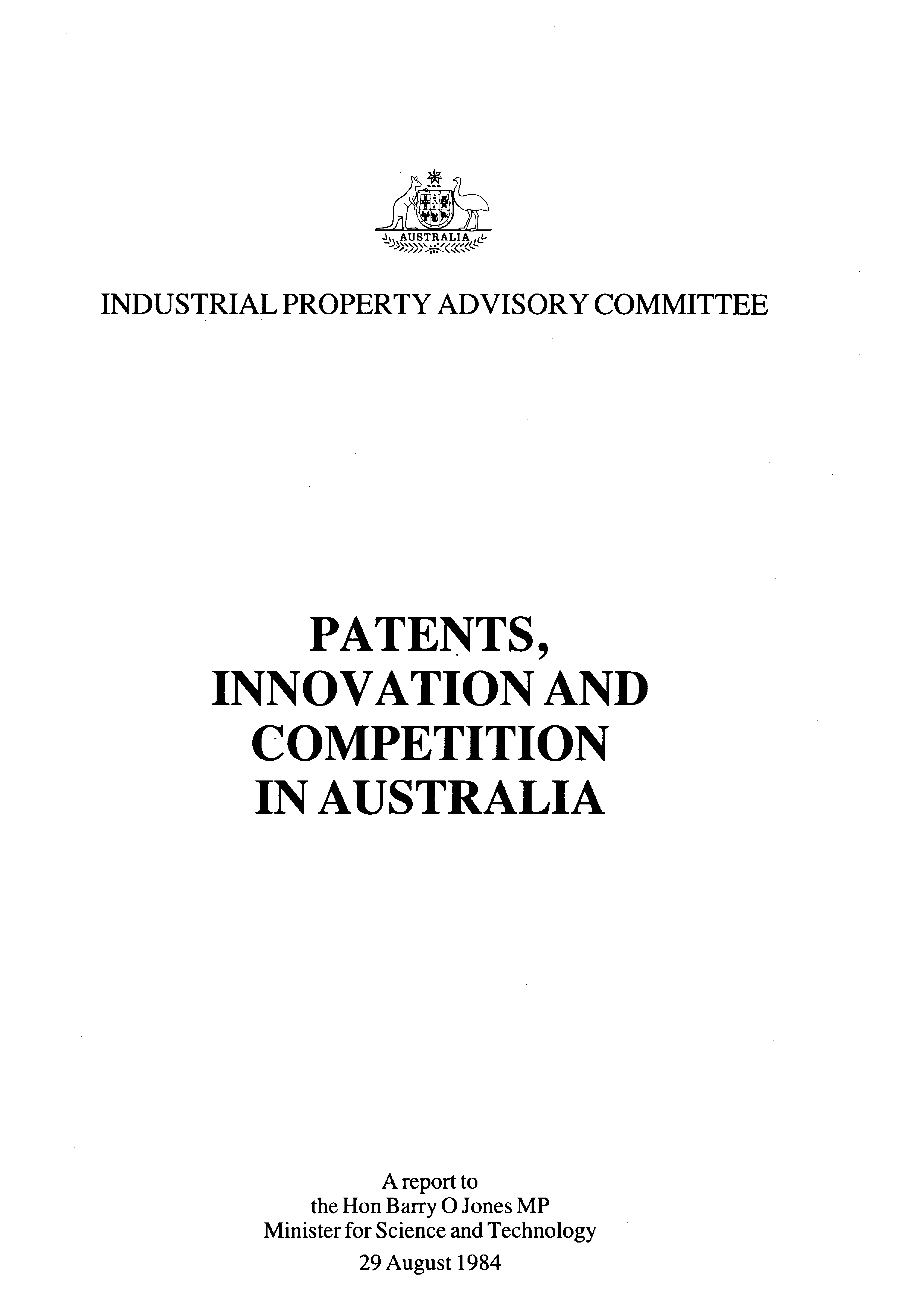The text below re-prints, verbatim and with permission, a particularly significant piece of Don Lamberton’s work. It is the dissenting statement that formed part of the industrial property advisory committee’s report of 1984. Don Lamberton was a member of the committee, which worked from 1982 and with which Don found himself in increasing disagreement. In her contribution to this special issue in honour of Don Lamberton, Hazel Moir examines the dominant approach to patents against which Don felt he had to protest; not much has changed in thirty years. Don did not expect his statement to change anything, and that was not the point of writing it. Don dissented because, believing what he did, it would have been dishonest to do anything else. The statement is a carefully-crafted, utterly excoriating piece, positive in that it suggests what might be done to improve matters, realistic in its appreciation that nothing would be done. Don also knew very well that his dissenting statement would mean ostracism from the patent establishment, whose self-interest Hazel Moir identifies as being so damaging to the public interest. Don was not mistaken; despite the personal admiration of influential individuals (of whom Barry Jones, the minister in charge of IPAC, was certainly one), he would never again be asked to play the tame academic. Not for a moment did Don ever regret writing his dissenting statement.
Dissenting statementFootnote1
D M Lamberton
This report does not live up to its claim to have adopted an economic perspective and to have applied economic criteria. It has not consistently applied economic criteria; it has not made full use of available empirical evidence; and the concept of social cost, so frequently mentioned, has never really been fully grasped. The underlying idea of the process of innovation is little more than faith that more patent protection will ensure more innovation. The sensible objective is rightly declared to be “to modify the Australian patent laws, adjusting the length, strength and breadth of patent rights” to maximize the net benefit. It is unfortunate that the report soon strays from this path.
No amount of talk about individual patent successes nor about a future in which the Australian economy has magically become progressive, innovation-oriented, and competitive on the world scene, can hide the facts that Australia exports little in the way of manufactured goods and has few inventions for sale. Most patents are granted to overseas firms. To make the most of this situation, Australia needs to reduce social costs to the extent possible without inhibiting innovation and without provoking international retaliation. As a small nation, there is scope for such action. The constraints of the Convention are largely myth.
A policy exercise such as this report should look to the dimensions that can serve as the basis of effective action. Abdication in favour of competition law does not hold good prospects in a small domestic market with highly concentrated industries often dominated by foreign investment. This approach is even less promising because patents operate as effective non-tariff barriers to import competition. In these circumstances the thrust of the report should have been designed to foster and capitalize on the capability to respond dynamically to change, to imitate, and to innovate competitively and not to preserve the profits of protected stability.
To acknowledge the circumstances of the Australian economy and to seek such a balancing of social cost and dynamic benefits is to reject much of this report. In particular, it points to:
| (a) | reduction of standard patent term to 10 years; | ||||
| (b) | some freeing of import competition from the restrictions patents permit (If permitting import competition would be tantamount to abandonment of the patent system, the case for exposing the protection afforded to public scrutiny, as is done with tariffs, is a strong one); | ||||
| (c) | implementation of a comprehensive system of employee rights in inventions; | ||||
| (d) | making sure that provisions such as compulsory licensing and re-examination can function effectively; | ||||
| (e) | ensuring that patent legislation facilitates the monitoring and control of the conditions under which technology is acquired from overseas; | ||||
| (f) | avoiding the restrictive consequences and additional social costs that can arise if the scope of the patent system is extended unnecessarily in the development of the information economy; | ||||
| (g) | weakening the professional patent attorney monopoly of costly advice; | ||||
| (h) | significantly improving the educational requirements for those working within the patent system; and | ||||
| (i) | clarifying the extent to which patent office operations are to be subsidized. Some important matters have been addressed inadequately, e.g.: | ||||
| (i) | the nature and extent of restrictive practices; | ||||
| (ii) | co-ordination with other industrial and economic policy measures; | ||||
| (iii) | co-ordination of availability of patent information with other sources of technological and business information; and | ||||
| (iv) | the administrative efficiency of the patent office. | ||||
The report is not an imaginative one. It is constrained by the very “haze of assumptions about rights and rewards for inventors, special pleading by those directly involved, and a plethora of legal procedures and criteria in the Patents Act” that it deplores. Many of its recommendations are for no change; and when change is implemented it is all too often merely procedural or has little prospect of being effective. A good opportunity to adjust an ancient institution to the current needs of the Australian economy has been missed.
General Editor
Notes
1. This statement is reprinted with permission under a Creative Commons 4.0 by attribution licence from IP Australia as the successor to the Australian patent, trade marks and design office. It is still available at https://web.archive.org/web/20120227072854/http://www.acip.gov.au/library/Patents,%20Innovation%20and%20Competition%20in%20Australia.pdf
